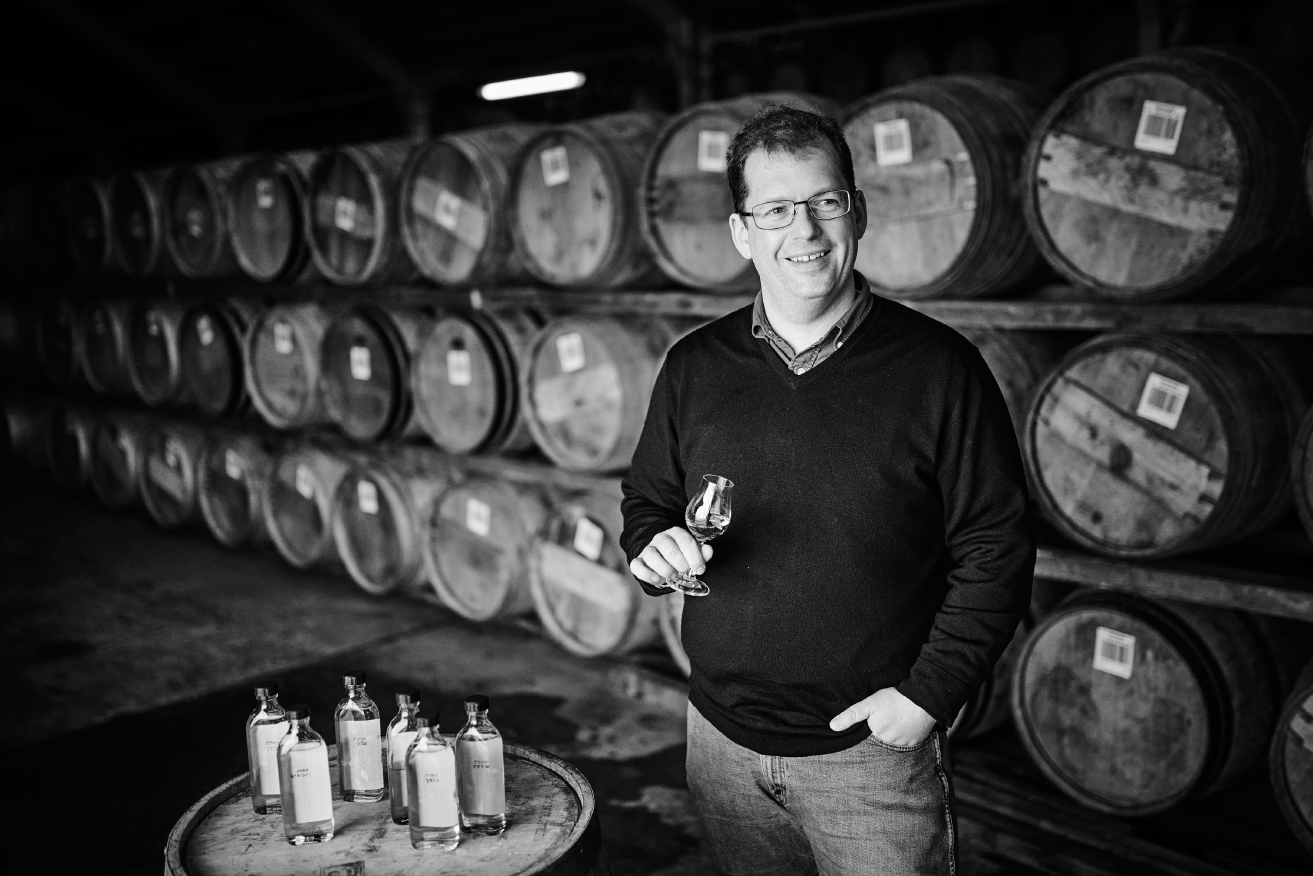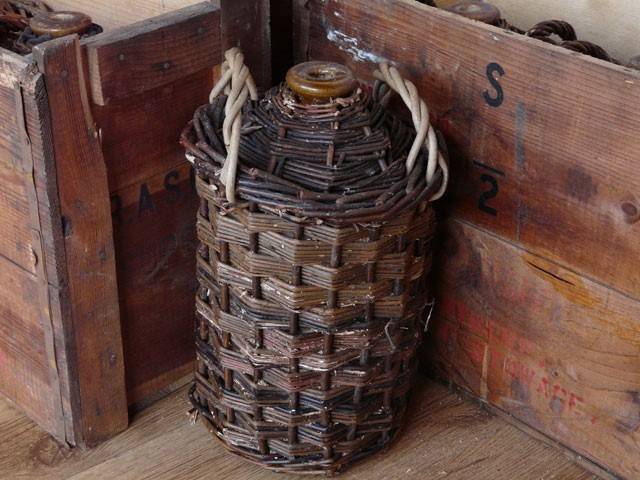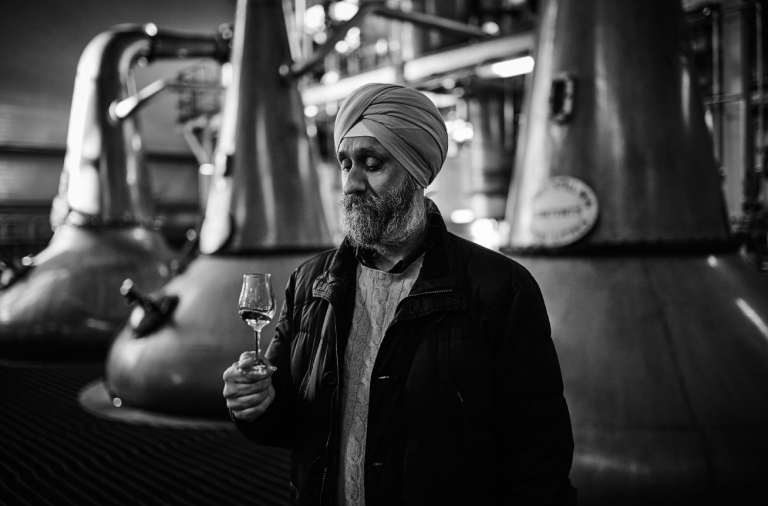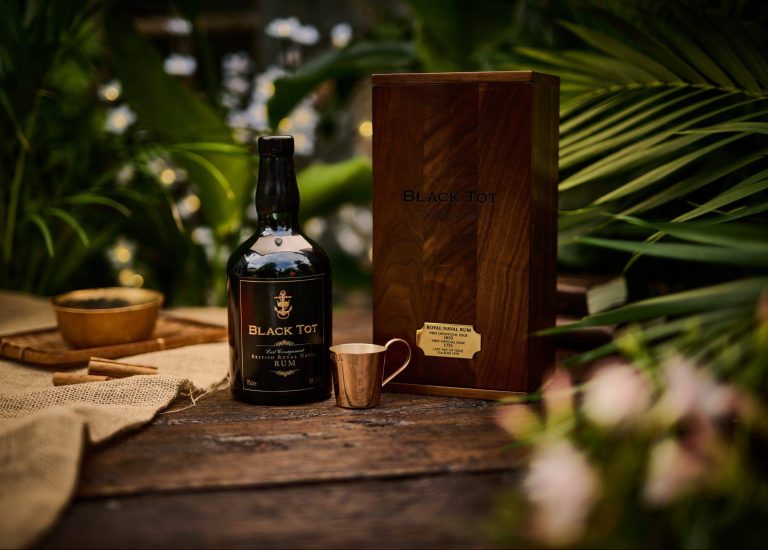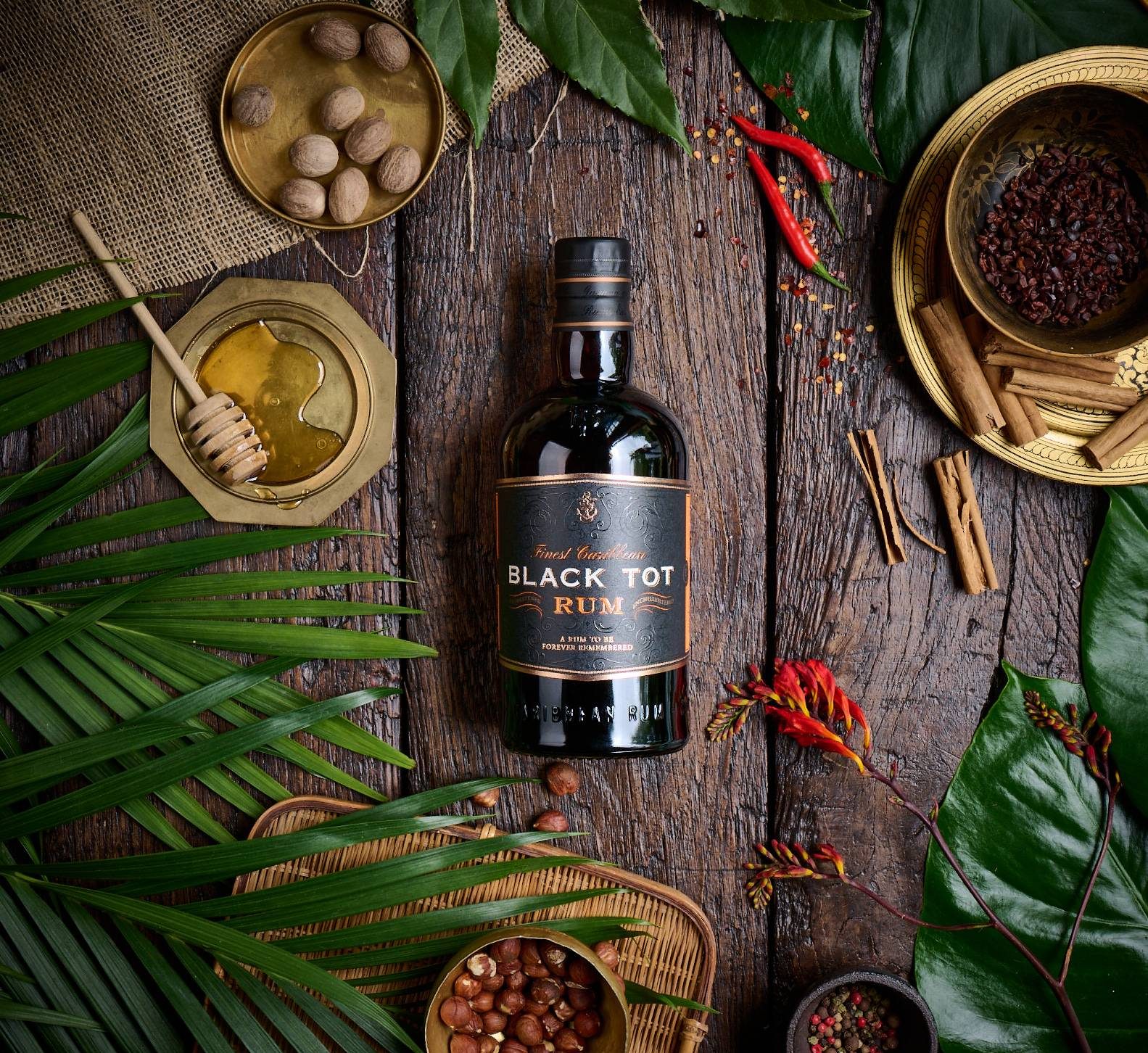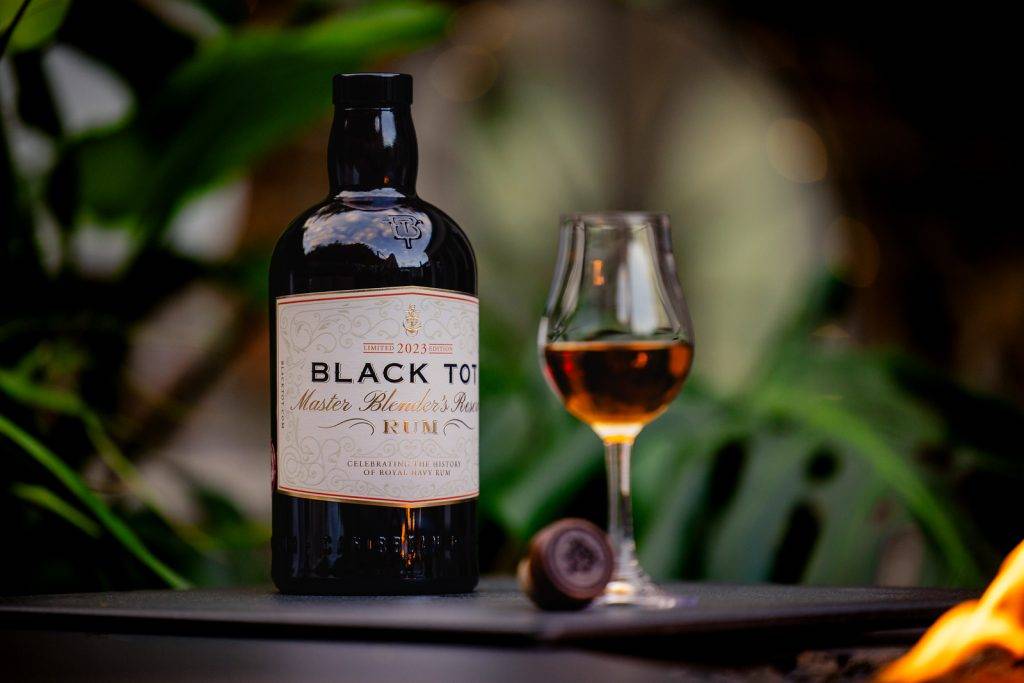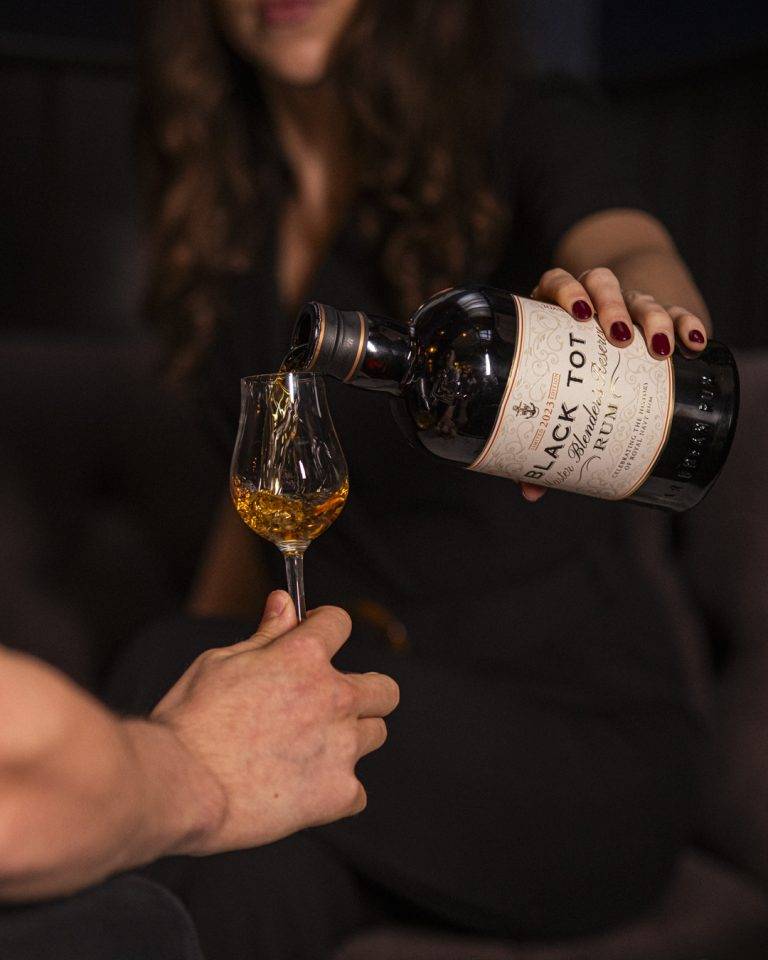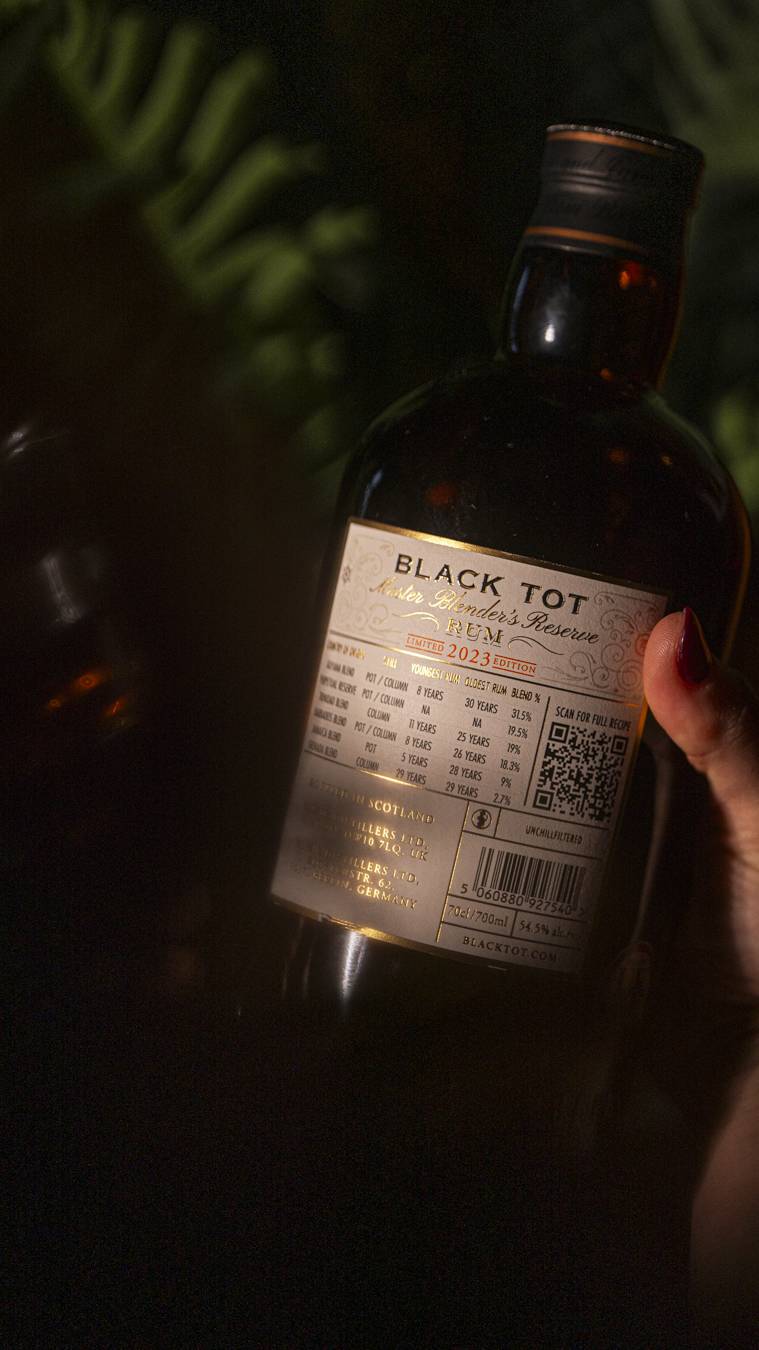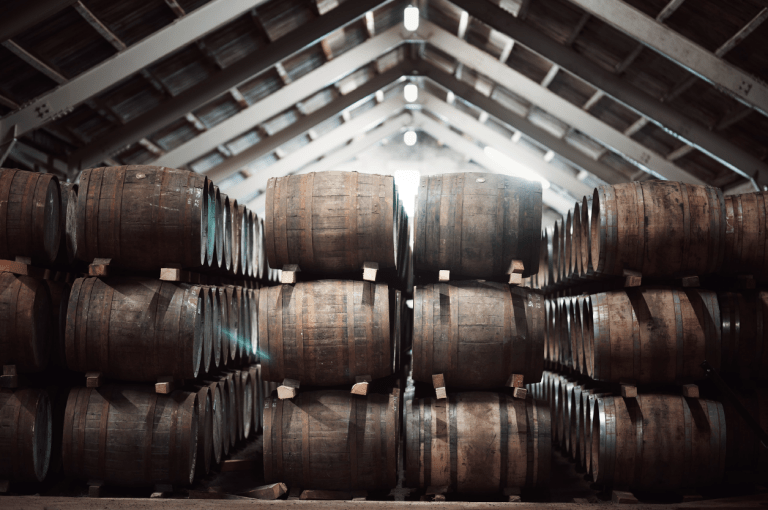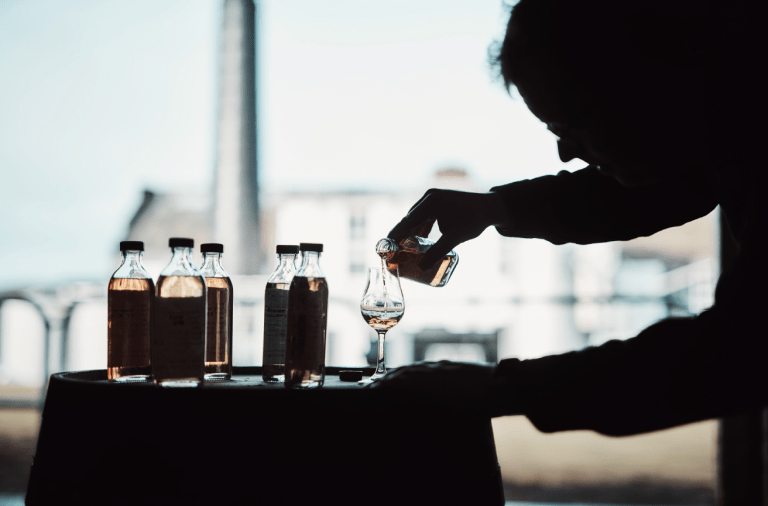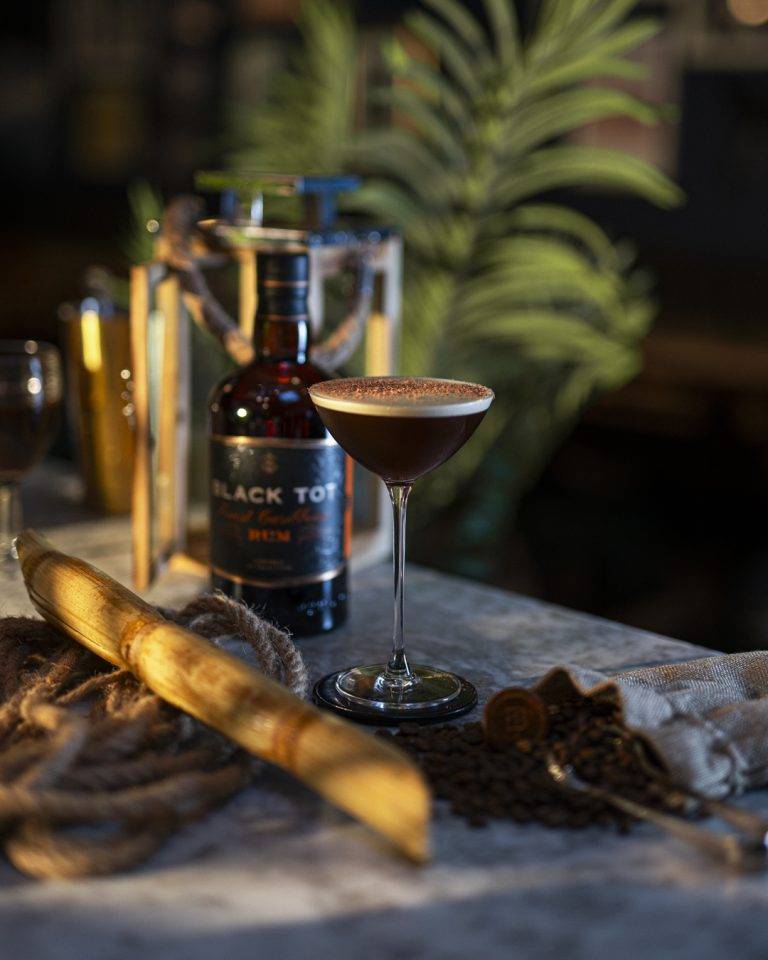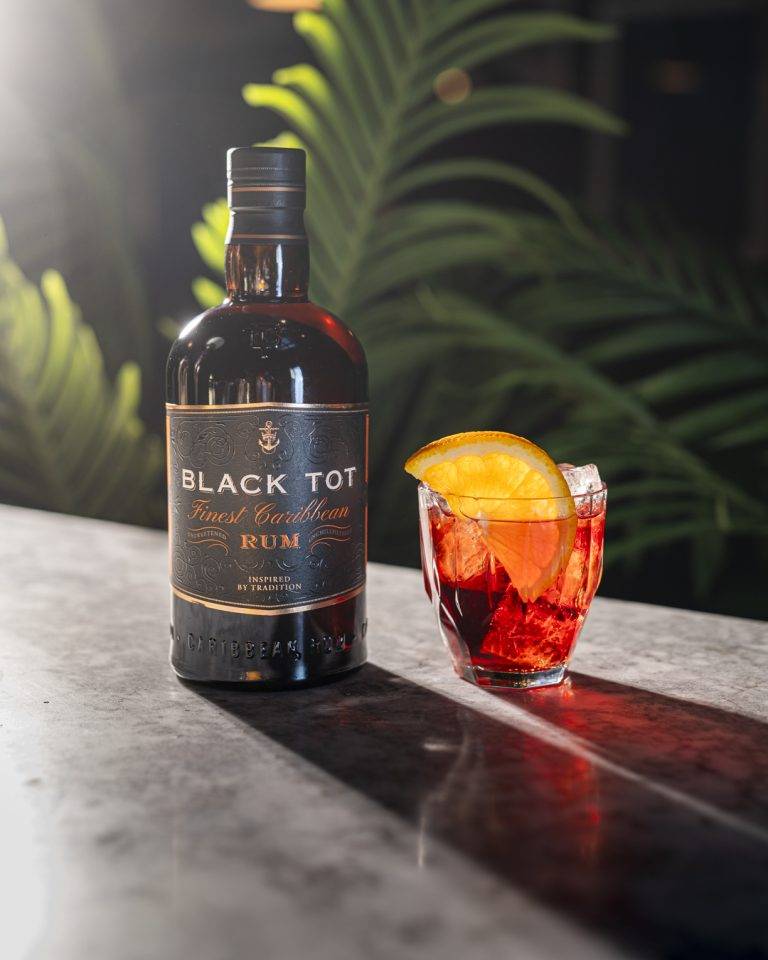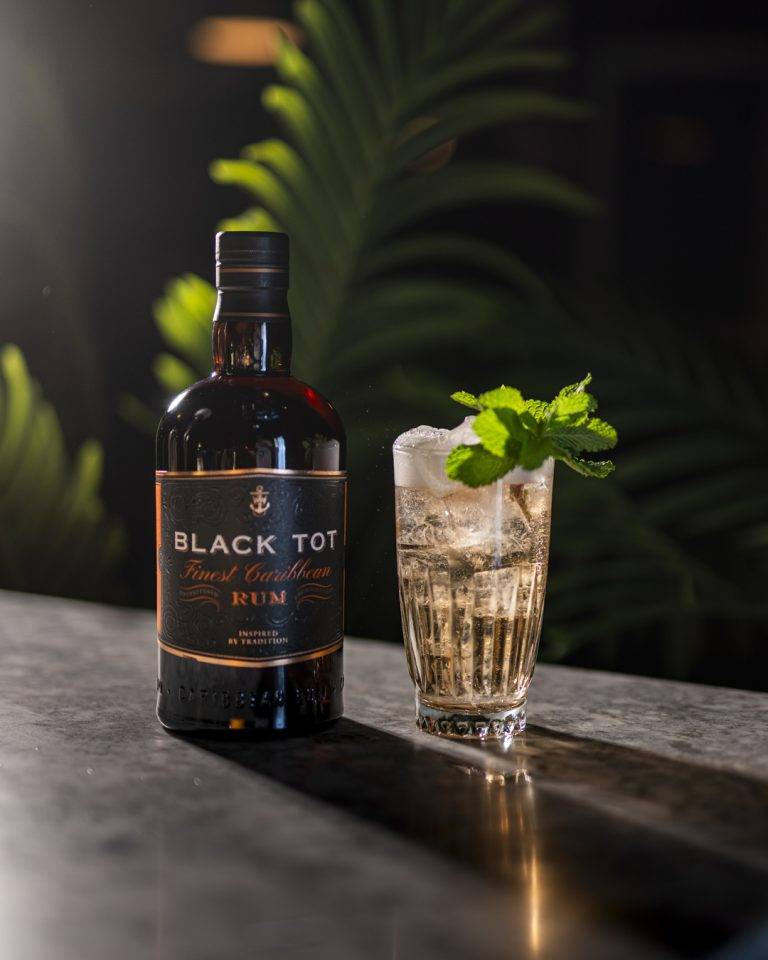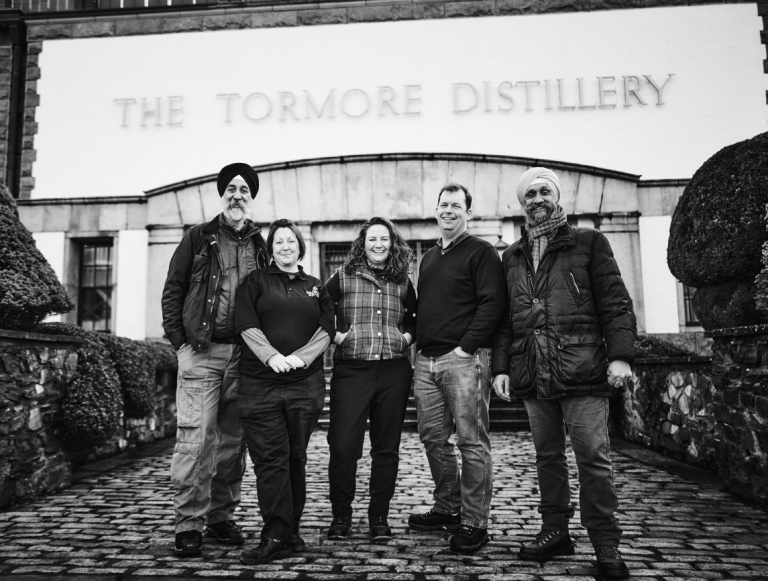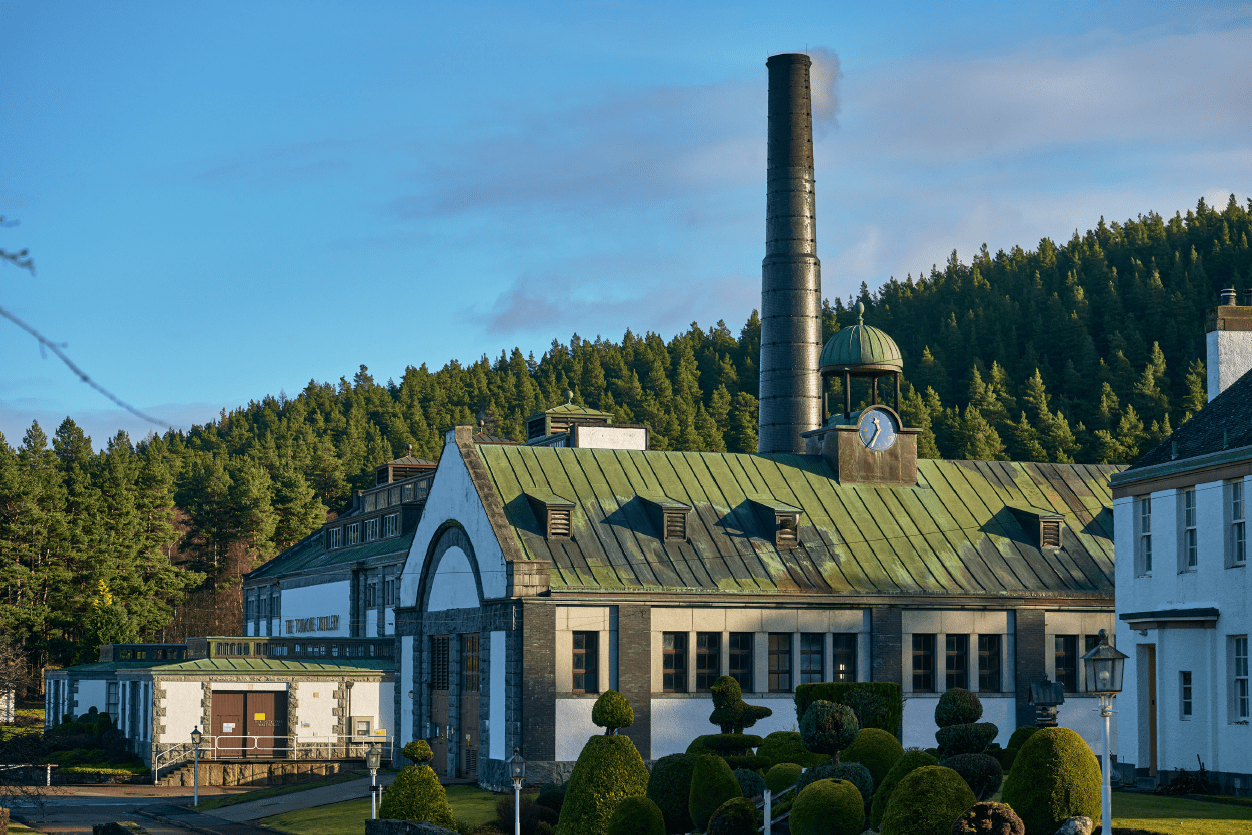Can you tell us a little about what you do, and provide some background on the history and origins of Black Tot Rum?
Black Tot is a range of blended rums celebrating the incredible depth and quality of flavours you can find in rum from around the world. As a blender, my day-to-day mostly splits into three areas: finding and caring for casks of rum, most of which will be used in Black Tot in many years to come; creating the various special releases and new rum blends; and ensuring the consistency in our core rum, Black Tot Finest Caribbean.
In 2011, our founder and Managing Director, Sukhinder Singh, purchased stone flagons filled with rum by the British Navy. Sukhinder isn’t new to collecting rum – he has been collecting fine spirits since he was 16 – however, the incredible depth of flavour, complexity, and richness that these flagons of rum held soon became the catalyst for obsession. It took him on a search to find more of these flagons – flagons that held the last remaining drops from the Royal Navy’s legendary daily tots.
This naval tradition spanned for nearly 170 years and blended more of the world’s rum together than some of the biggest producers today. It was produced by mixing rum from around the world in large, open-top vats that were never emptied more than a third. And one day, it was gone; on July 31st 1970, the last of the rum rations were poured out for sailors, locked away in these flagons, never again to see the light of day – a day known in history as Black Tot Day. As Sukhinder found the last remaining stock, he honoured those sailors and their tradition by blending these flagons together to create Black Tot Last Consignment.
With the original Navy Rum blend in short supply, Sukhinder and I began discussing what the blend would taste like if it were created today. It would be an impossible task to try and replicate a blend profile that was crafted over 200 years, with much of it coming from distilleries long since lost. Instead, we decided to focus on developing a blend for today, with a mixture of the sweetness and softness of modern rums and the full, fruity flavours of some of the more traditional rums. Mostly, we wanted the depth and character we found in the original Navy rum. So, over the course of two years, we trialled a total of 26 different blends until Black Tot Finest Caribbean Rum was born.
How do you use the rums from around the world to make different flavours within your blend?
For Black Tot Finest Caribbean, Guyana has always been an integral heart of the Tot and remains so for us. It builds up the heavy liquorice notes and layers of chocolate in the blend. For the tropical fruit notes, Barbados rum brings this quality like no other, while Jamaica plays a pivotal role in adding the funk and complexity needed for the depth and quality we require. We keep the purity of flavour in the front of our minds. We never chill filter, we never sweeten, and we always bottle our rums at a strength that shows it at its best.
When looking at Master Blenders Reserve, our annual special release, we have a wider scope as we change the profile for each new batch. It has allowed us to look at rums from Australia and Grenada. We always start with an idea, and then, as we explore and discover the flavours of rums from around the world, we find our blends evolving. The incredible array of flavours available in rum is what makes it so interesting and allows for so much variety.
How does the history of rum blending influence your rum today?
We are always evolving our blending methods so that we can further develop and explore flavour.
… and we are still very much on a journey, researching and discovering techniques that were used and bringing them into what we do today. In 2020, we released Black Tot 50th Anniversary to mark the anniversary of Black Tot Day. This blend brought together some of the great lost rums of the past with the amazing modern distillates of today. It also formed the beginning of our perpetual reserve, a method inspired by the Royal Navy where new casks are added to older batches.
Is this like what you mentioned before in how the Navy kept a third of rum in their vats?
Absolutely! Some people have referred to this as Solera in reference to how they make fortified wine, such as Sherry, in Spain. We call it perpetual blending as it allows a level of consistency but also gives license to add and change the blend as tastes develop. We know that the Navy changed the blend as the sailors’ showed preferences for particular styles. We want to be able to do that – have an eye on the heritage and tradition but always look to what people today will enjoy drinking.
Black Tot Rum has a few products under its umbrella – can you give us an overview of the different rums and their defining characteristics?
We currently have three rums in our range:
Black Tot Finest Caribbean: we blend different styles of pot and column still rums from Demerara Distillers (Guyana), Foursquare (Barbados), and Worthy Park (Jamaica) to create balanced and rich layers of tropical fruits, dark chocolate, and coffee. This makes it perfect for sipping neat whilst adding depth and complexity to craft cocktails.
Last Consignment: The last remaining rum from the Royal Navy that was preserved in antique stone flagons for forty years before being bottled. A continuous blend that started in 1804 and finished in 1970, this bottling contains rum from historic distilleries such as Caroni and Port Mourant, as well as many other long-since-lost distilleries. Remarkably, after 40 years, it is 54.3%, almost exactly the original issuing strength, with rich notes of oak, espresso, and cacao layered with black fruits.
Master Blender’s Reserve: we have re-imagined the original Navy technique of perpetual blending, holding back a third of the rum from previous releases as a base for the next iteration. With Master Blender’s Reserve 2023, we wanted to create a blend that is closer to the original Navy rum, with a heavier mouth feel and rich notes of wood smoke, espresso and cacao. We added rums from Guyana, Trinidad, Barbados, and Jamaica, aged anywhere between 5 and 31 years. A higher proportion of the Guyana component was included as the thick liquorice and muscovado in this rum help recreate the unique flavour profiles they exhibited over half a century ago. We also included a rum from Grenada, distilled in 1993, to add depth and accentuate rich orange oil notes from our perpetual reserve.
What makes Black Tot Rum unique in the world of rum? Are there specific elements or production methods that set it apart?
The first thing is our perspective – our founder is one of the leading whisky specialists in the world with a deep and rich knowledge of not only whisky but all spirits. He wants rum to be seen as it should be, a serious and complex spirit as good as, if not better than, the most sought-after and respected categories of whisky and cognac. On discovering the rum we used for Black Tot Last Consignment, he could see that rum’s strength was the incredible array of flavours and styles and what could be made by bringing them together.
Much of the rum world has been opaque at best, with recipes and production techniques hidden from view. We strongly believe that the only way rum will get the respect it deserves is by sharing how it is made with people. We share all our blend recipes either on the bottle or on our website. We believe the art of making rum is in the evolution of each individual distiller and how the blender interprets that. Therefore, we are happy for people to know how we have worked with each distillery to make our rum. No other blended rum in the world has offered this level of detail before, and we hope our contribution inspires other blenders to do the same.
Can you walk us through the distillation and ageing processes for the rum(s)? What type of barrels are used, and for how long is the rum typically aged?
Each component in our rum blends is made in different ways, depending on the distillery and country they originate from. Some distilleries opt for heavier pot still distillation, and some use technology unique to the Caribbean, like double-retort pot stills. Others choose to use traditional column stills to create lighter, fruitier-style rums, while others form their own blend between pot and column stills for balance.
Ageing typically starts for its first few years in the Caribbean in ex-Bourbon barrels, then might continue to age in colder climates such as Liverpool or Amsterdam, as the barrels are shipped across the world and waiting to be selected for bottling. We always disclose the full breakdown between ‘Tropical’ and ‘Continental’ Ageing so that you know exactly how old and where your barrel was aged.
Global Brand Ambassador, Mitch Wilson, giving a Tall Ships Toast with Black Tot Rum
Black Tot Rum is a blend of rums from different distilleries. Could you share some insights into the selection and blending process for the various components of the rums?
Every blend is always a journey where you lose the map halfway through. You will start with a clear idea of what you will make and then be taken on an adventure by the ingredients, normally finding something pretty special on the way.
For Black Tot Finest Caribbean, we spent two years tasting and exploring to come up with the recipe we have today. Although it may seem like a simple recipe of just four different styles of rum, it is actually a very delicate balance to get there. We are lucky that the distillers we work with create such consistent ingredients, so the changes we have to make are very small – similar to baking a cake at home.
In terms of the annual releases or special additions, this is more about creative instinct. I try to set rules for myself so that there is an end goal, and then I explore each category of rum, building different flavours, like how you might use different dishes to build a menu.
The easiest way I find to explain blending is to think of it like painting. You have to first select the colours before you can use them to paint a picture. However, before making the colours, you need an idea of the painting you would like to create.
However, there is a lot of ‘two steps forward, one step back’. When you are blending for consistency, such as we do with Black Tot Finest Caribbean, you have a very specific end flavour and style to reach, though to achieve this, the recipe may change in small ways to take account of changes in spirit and wood. With something like Master Blender’s Reserve, while you may have an initial style in mind, you are more able to go on the journey with the rum and find new flavours and combinations that weren’t in your initial brief.
When selecting the casks to start with, we identify the characters we feel will help us find the specific flavours we are looking for. With that in mind, we get representative samples of all the different styles we are looking to include and then essentially start messing around. It is not an exact science; there is a lot of adding something and then adjusting. You also have things like how the cask can change in transit – for example, if you take a sample when the cask is lying and then you move it around, you will often find variances in the flavours you end up getting. There is also the time lag between your initial samples being taken and when you move the cask for vatting – this additional ageing will also affect the flavour.
Once we have our bench sample, we buy the casks we require from each marque and vintage (along with a little extra) and then start the same process on a larger scale. Once we have our vat of rums, we taste it and then start adjusting for the cask variations by adding from our spare stock. Typically, we might taste anywhere between 50 and 100 casks before making a selection for the final blend.
What has been the most rewarding part of creating Black Tot Rum?
The journey into rum has been incredible. I have worked as a blender in whisky for over a decade, but rum has been an entirely new challenge. I have particularly loved the culture around the rum community. It is full of warm and generous people who are open to sharing their knowledge and understanding. I hope that we are able to use Black Tot to do the same and bring more people into the rum world.
Any suggestions on the best way(s) to enjoy Black Tot Rum?
For Black Tot Finest Caribbean, we recommend you sip it neat so you can experience the different layers of flavour. It also works well in craft cocktails; our three top serve recommendations are:
- Espresso Rumtini
- Right Hand
- Tot and Tonic
You can find all our serve suggestions on our website: Black Tot | Black Tot Finest Caribbean
For Master Blender’s Reserve and Last Consignment, we recommend sipping these neat from your favourite tasting glass. We’ve even designed and made the ‘Elixir Tasting Glass’, especially for tasting incredible spirits like these. An added drop of water or an ice cube is down to personal preference, but we think these rums taste perfect without any extra additions.
As the rum industry continues to evolve, what are the future trends and opportunities for Black Tot Rum? Are there perhaps any new or limited-edition releases in the pipeline?
We hope the future is all about sharing information and transparency! We want Black Tot to be at the forefront of this and for it to lead the world of rum in taking on whisky and cognac as one of the world’s most complete spirits.
In terms of new blends – we have been researching and experimenting with different historic blending techniques as well as looking at different countries we can bring into our blends. We have lots of new rums on the horizon, so keep your eyes peeled!
We have just started blending our Master Blender’s Reserve 2024 at our very own distillery in Speyside – Tormore Distillery. Follow our Instagram page (@blacktotrum) as we will be releasing some behind-the-scenes footage of how this has been made.
To find out more about Black Tot Rum, visit the website, email info@blacktot.com or call +44 (0)20 8838 9385

